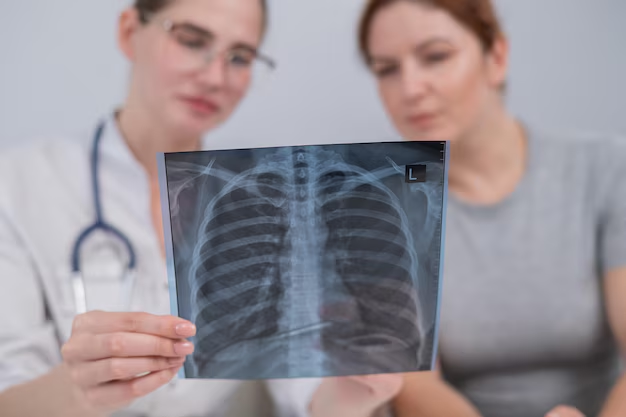Walking Pneumonia vs. Pneumonia: Understanding Key Differences
Pneumonia is a term that can send shivers down the spine, conjuring images of serious illness and hospitalization. But then there's "walking pneumonia," a seemingly lighter version of the same condition. So, what really sets these two apart? The distinctions aren't just academic—they can influence treatment decisions, recovery time, and your overall approach to managing your health.
What Is Pneumonia?
Pneumonia is an infection that inflames the air sacs in one or both lungs, leading to symptoms like cough, fever, and difficulty breathing. It may be caused by a variety of organisms, including bacteria, viruses, and fungi. Pneumonia can range from mild to severe and is a significant health concern worldwide, especially for infants, older adults, and people with weakened immune systems.
Causes of Pneumonia
- Bacterial Pneumonia: Often the most severe form, with Streptococcus pneumoniae as the leading bacterial culprit.
- Viral Pneumonia: Typically less severe but often follows or accompanies a cold or flu. Viruses like the influenza virus, respiratory syncytial virus (RSV), and COVID-19 can lead to viral pneumonia.
- Fungal Pneumonia: Less common, generally affecting those with chronic health issues or weakened immune systems.
Key Symptoms
- Persistent cough, potentially with phlegm
- High fever and chills
- Shortness of breath
- Chest pain, particularly when breathing or coughing
- Fatigue and muscle aches
What Is Walking Pneumonia?
Walking pneumonia is a colloquial term for mild pneumonia. It's often caused by atypical bacteria like Mycoplasma pneumoniae. People with walking pneumonia are usually well enough to go about daily activities—they can "walk around," which is how the illness gets its name.
Causes of Walking Pneumonia
Primarily caused by:
- Mycoplasma pneumoniae: A less severe bacterial infection compared to traditional pneumonia.
Key Symptoms
- Mild cough
- Low-grade fever
- Mild chest pain
- Fatigue
- Sore throat
Walking pneumonia is contagious, particularly in crowded spaces like schools and workplaces. The symptoms are milder, and because it often sneaks up without severe signs, it's easy to mistake for a common cold or viral infection.
Distinctions Between Walking Pneumonia and Pneumonia
Severity and Symptoms
The primary difference lies in symptom severity. While pneumonia can be life-threatening, walking pneumonia tends to be mild, letting individuals maintain daily routines. Symptoms of walking pneumonia mimic those of the common cold but linger longer.
Diagnosis
Both conditions require medical diagnosis. Physicians will perform physical exams and may use chest x-rays and sputum tests. However, walking pneumonia might sometimes elude initial detection due to its mild symptoms.
Treatment Options
- Typical Pneumonia: Treatment is often aggressive, involving antibiotics, antiviral medications, and sometimes hospitalization.
- Walking Pneumonia: Usually treated with oral antibiotics for bacterial causes, rest, and hydration to relieve symptoms.
Recovery Time
- Pneumonia: Recovery can take weeks to months, depending on severity and patient health.
- Walking pneumonia: Typically resolves faster, often within a few weeks, with minimal intervention.
Related Considerations
Risk Factors
- Meticulous Hygiene: Regular handwashing can prevent both types.
- Vaccination: Protects against certain types of bacterial and viral pneumonia.
- Healthy Lifestyle: Maintaining good health reduces risks. This includes regular exercise, balanced nutrition, and adequate sleep.
When to Seek Medical Attention
Persistent symptoms, high fever, and difficulty breathing signal it's time to contact a healthcare provider. Since walking pneumonia's mild nature might encourage neglect, monitoring prolonged symptoms is essential even if they're not severe.
Practical Tips for Management
- Stay Hydrated: Drink plenty of fluids to thin mucus and stay hydrated.
- Rest: Essential for immune function.
- Avoid Smoking: Smoking exacerbates respiratory symptoms.
- Use Over-the-Counter Pain Relievers: To manage discomfort and fever.
Beyond the Symptoms: Understanding Your Options
Knowing the distinctions between walking pneumonia and pneumonia allows for informed conversations with healthcare providers and more vigilant monitoring of your health. Remember, while walking pneumonia is less severe, it still requires attention.
How to Support Recovery
- Strengthen Your Immune System: Focus on a diet rich in fruits and vegetables, regular exercise, and adequate sleep.
- Monitor Symptoms: Keep a diary to track symptoms and their progression. This is vital whether recovering at home or under medical care.
- Educate Yourself: Understanding symptoms, treatment options, and when to seek care can make a significant difference in how well you manage either condition.
Community and Prevention
The role of community health is also crucial. Awareness and proactive prevention measures, like regular vaccinations and education programs, can lower pneumonia prevalence.
Navigate Your Health Proactively
Whether it's walking pneumonia or full-blown pneumonia, understanding your condition is half the battle. By learning the symptoms, causes, and pathways for treatment, you're better equipped to handle and potentially prevent these infections. Always consult healthcare providers for precise diagnosis and treatment suited to your condition.
Essential Takeaways for Patients and Caregivers
- Distinguish Symptoms: Knowing when it's something more than a cold helps in seeking timely treatment.
- Follow Medical Guidance: Adherence to prescribed medication hastens recovery.
- Keep Informed: Health literacy empowers better health decisions.
Quick Summary: Pneumonia vs. Walking Pneumonia
- Symptoms Checker:
- Pneumonia: High fever, severe cough, breathing difficulty 🌡️
- Walking Pneumonia: Mild symptoms, persistent cough, general malaise 👟
- Treatment Path:
- Pneumonia: Medical intervention often required 💊
- Walking Pneumonia: Manageable with antibiotics and rest 🛌
- Precautionary Steps:
- Prevention: Hand hygiene, avoiding smoking, staying vaccinated 🦠
- Diet and Lifestyle: Boost immune function with a healthy regime 🥗🏋️♂️
Understanding these conditions not only helps manage personal health but also enhances community awareness, potentially reducing the spread and impact of respiratory illnesses overall. Stay informed, stay proactive, and prioritize your health. 🌍💪

Related Articles
- a Typical Pneumonia
- Can a Cold Turn Into Pneumonia
- Can a Sinus Infection Turn Into Pneumonia
- Can Amoxicillin Cure Pneumonia
- Can Amoxicillin Treat Pneumonia
- Can Baby Oil Cause Pneumonia
- Can Bronchitis Turn Into Pneumonia
- Can Covid Turn Into Pneumonia
- Can Doxycycline Treat Pneumonia
- Can Flu Turn Into Pneumonia